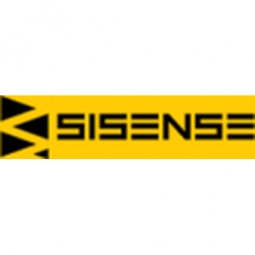公司规模
Large Corporate
地区
- America
国家
- United States
产品
- Sisense
技术栈
- SQL Server
实施规模
- Enterprise-wide Deployment
影响指标
- Productivity Improvements
- Customer Satisfaction
- Digital Expertise
技术
- 分析与建模 - 大数据分析
- 应用基础设施与中间件 - 数据可视化
适用行业
- 医疗保健和医院
适用功能
- 商业运营
- 质量保证
服务
- 系统集成
- 软件设计与工程服务
关于客户
Advocate is a benchmark leader in radiology billing with clients across the United States. The company faced significant challenges with its old billing systems, which were slow, outdated, and unable to handle the growing amounts of data. The decision to implement Sisense was made just before System Architect, Brian Bontrager, joined Advocate. Brian was responsible for converting old reports and rolling out the new system to clients. Advocate's primary goals were to leverage massive data sources, improve performance, and provide an updated look.
挑战
Advocate’s old system had problems with speed and scalability. It could take multiple hours to produce an extract, often timing out during the process and failing. On top of this, it was very slow to refresh, was dated, and most importantly, could not handle their growing amounts of data.
解决方案
Brian worked heavily with Sisense’s professional services group and over the course of a year recreated, page by page, the previous environment within Sisense. Following the implementation of Sisense, Advocate’s user base was very excited. One user, responsible for entering charge information into the system, took the initiative to completely overhaul the dashboards and optimize them for their particular operations flow. Advocate uses three different types of dashboards: Visual true style, Question specific style, and Advocate specific 'Fusion' style. The 'Fusion' style allows for extensive drill down and filtering for when clients don't necessarily have a specific question and want to explore the data. In their old system, the 'Fusion' style could only support up to two clients because of the volume of data and work involved. Currently, with Sisense, Brian has five clients making use of it and can easily scale far beyond as demand comes in.
运营影响
数量效益

Case Study missing?
Start adding your own!
Register with your work email and create a new case study profile for your business.
相关案例.

Case Study
Hospital Inventory Management
The hospital supply chain team is responsible for ensuring that the right medical supplies are readily available to clinicians when and where needed, and to do so in the most efficient manner possible. However, many of the systems and processes in use at the cancer center for supply chain management were not best suited to support these goals. Barcoding technology, a commonly used method for inventory management of medical supplies, is labor intensive, time consuming, does not provide real-time visibility into inventory levels and can be prone to error. Consequently, the lack of accurate and real-time visibility into inventory levels across multiple supply rooms in multiple hospital facilities creates additional inefficiency in the system causing over-ordering, hoarding, and wasted supplies. Other sources of waste and cost were also identified as candidates for improvement. Existing systems and processes did not provide adequate security for high-cost inventory within the hospital, which was another driver of cost. A lack of visibility into expiration dates for supplies resulted in supplies being wasted due to past expiry dates. Storage of supplies was also a key consideration given the location of the cancer center’s facilities in a dense urban setting, where space is always at a premium. In order to address the challenges outlined above, the hospital sought a solution that would provide real-time inventory information with high levels of accuracy, reduce the level of manual effort required and enable data driven decision making to ensure that the right supplies were readily available to clinicians in the right location at the right time.

Case Study
Gas Pipeline Monitoring System for Hospitals
This system integrator focuses on providing centralized gas pipeline monitoring systems for hospitals. The service they provide makes it possible for hospitals to reduce both maintenance and labor costs. Since hospitals may not have an existing network suitable for this type of system, GPRS communication provides an easy and ready-to-use solution for remote, distributed monitoring systems System Requirements - GPRS communication - Seamless connection with SCADA software - Simple, front-end control capability - Expandable I/O channels - Combine AI, DI, and DO channels

Case Study
Driving Digital Transformations for Vitro Diagnostic Medical Devices
Diagnostic devices play a vital role in helping to improve healthcare delivery. In fact, an estimated 60 percent of the world’s medical decisions are made with support from in vitrodiagnostics (IVD) solutions, such as those provided by Roche Diagnostics, an industry leader. As the demand for medical diagnostic services grows rapidly in hospitals and clinics across China, so does the market for IVD solutions. In addition, the typically high cost of these diagnostic devices means that comprehensive post-sales services are needed. Wanteed to improve three portions of thr IVD:1. Remotely monitor and manage IVD devices as fixed assets.2. Optimizing device availability with predictive maintenance.3. Recommending the best IVD solution for a customer’s needs.

Case Study
HaemoCloud Global Blood Management System
1) Deliver a connected digital product system to protect and increase the differentiated value of Haemonetics blood and plasma solutions. 2) Improve patient outcomes by increasing the efficiency of blood supply flows. 3) Navigate and satisfy a complex web of global regulatory compliance requirements. 4) Reduce costly and labor-intensive maintenance procedures.

Case Study
Cloud-based healthcare solution for Royal Philips
Royal Philips wanted to launch its cloud-based healthcare solution HealthSuite Digital Platform in China to deliver services to help cope with challenges related to urbanization and population growth. Philips wanted to achieve this goal by combining mobile, cloud computing and big data technologies. To bring this platform and product to market, Philips required cloud computing and local technical service capabilities in China, in addition to a flexible IT infrastructure that could handle user requests.








